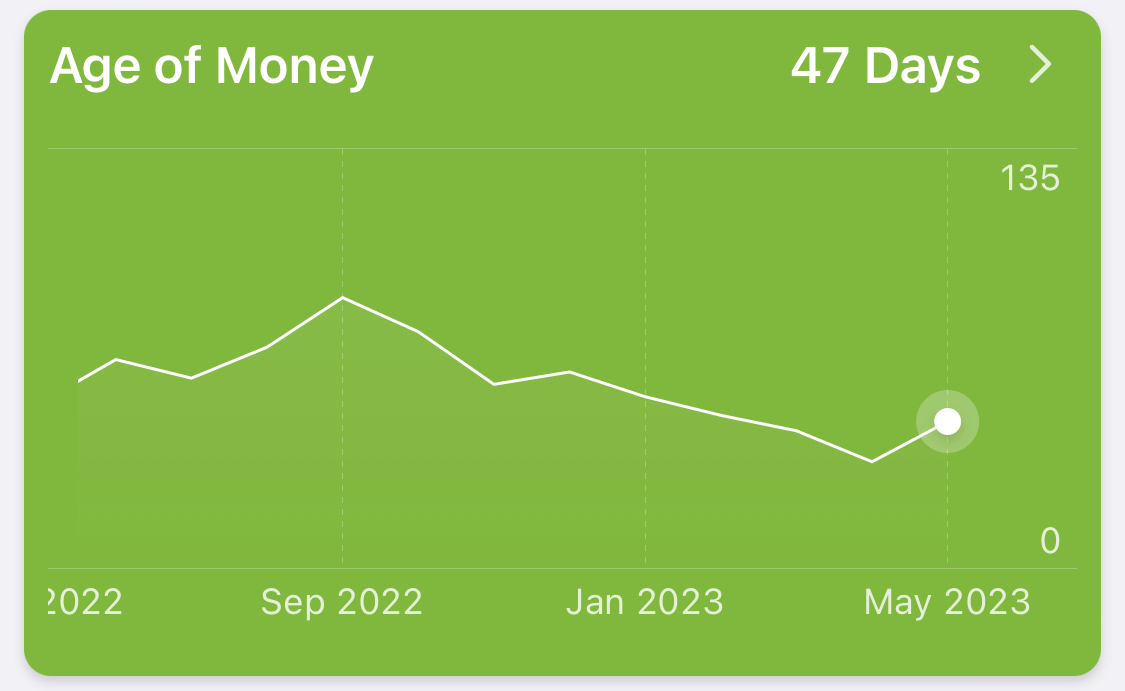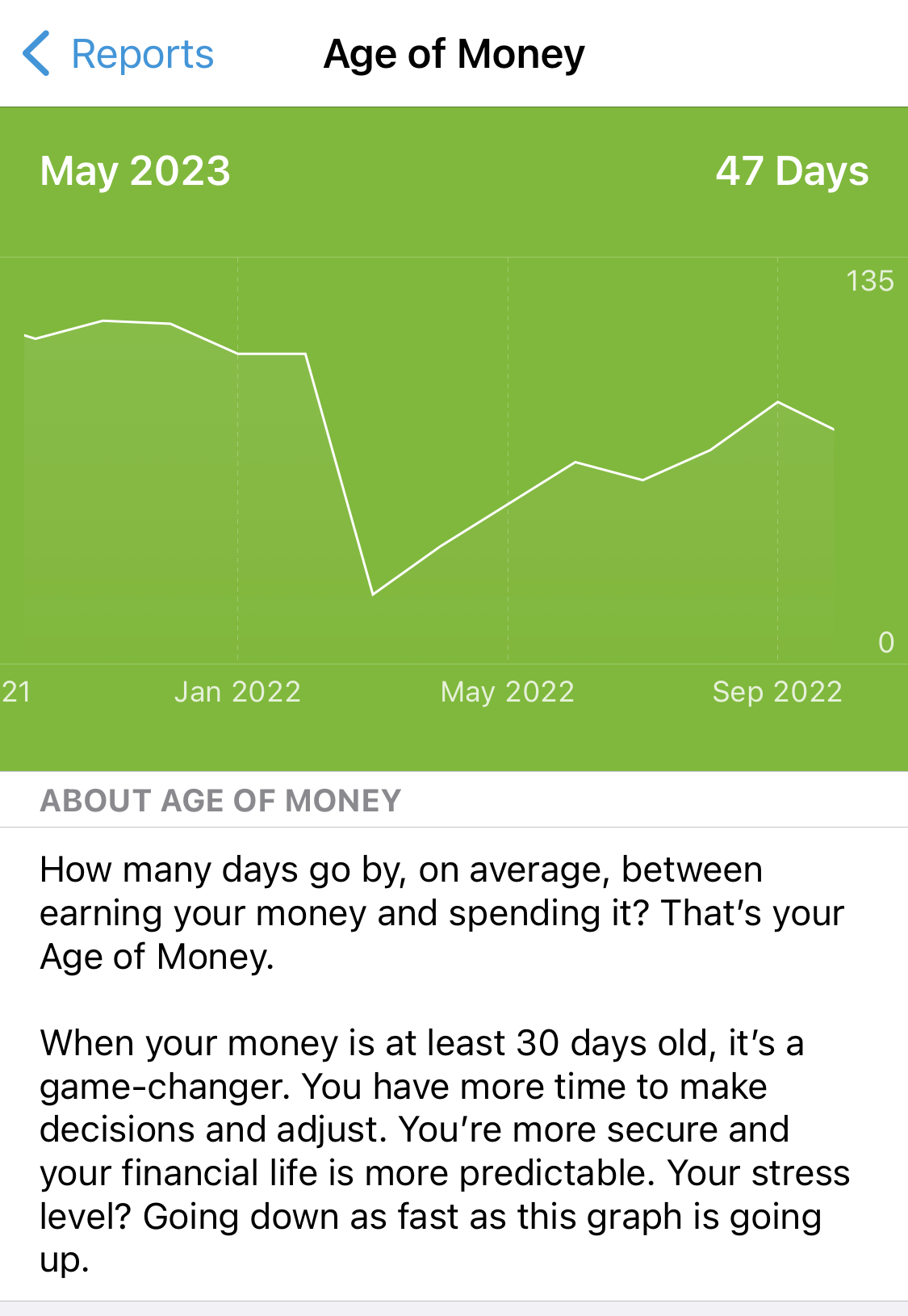What Is YNAB Age of Money And How To Use It
Are you tired of living paycheck to paycheck, constantly worried about your financial stability? Imagine having a tool that not only tracks your spending habits but also provides insight into your financial security. Introducing YNAB's Age of Money, a powerful metric that will revolutionize your approach to personal finance.
Join us on this journey to unveil the benefits of the YNAB Age of Money. Discover how it's calculated, how to achieve your optimal Age of Money, and how to balance saving and spending. Learn to utilize the Age of Money report to interpret fluctuations and project your future financial health. Ready to take control of your finances? Let's dive in!
Short Summary
- Discover the power of YNAB's Age of Money to track your financial stability.
- Balance saving and spending with lifestyle satisfaction, risk tolerance and investment opportunities.
- Utilize the Age of Money report in YNAB to interpret fluctuations & project future financial health.
Discovering Age of Money in YNAB

Imagine having a crystal ball that could give you a glimpse into your financial security. Age of Money is a metric that shows how long your money has been sitting in your pocket before you use it. It's a game-changer, allowing you to monitor your financial stability and make informed decisions.
But what's the magic behind this powerful metric? Let's explore how to locate Age of Money in YNAB and uncover the calculation process that makes this tool so valuable to your financial journey.
Locating Age of Money in YNAB
Finding Age of Money in YNAB is a breeze. It's conveniently located on the top right-hand corner of all YNAB screens in the web application, keeping your financial stability at your fingertips. No more digging through endless menus to access this vital information.

You'll find Age of Money under the reports tab in the mobile app.
Age of Money is a key metric for understanding your financial health. It's a measure of how long your money has been sitting in your accounts.
The Calculation Process
So, how does YNAB determine your Age of Money? It's all about the time between when you add a dollar to your budget and when you spend it. Think of it as a measure of how long your money sits idle before being put to work.
For example, if you receive a paycheck on October 1st and immediately use it to pay a bill on October 2nd, your Age of Money would be just one day old. On the other hand, if you have enough money in your account to cover your bills and only spend that paycheck on October 30th, your Age of Money would be 29 days old. The higher your Age of Money, the greater your financial security.
The Age of Money metric is the average age of your money based on your last 10 CASH transactions. Credit card transactions are not included in the calculation because you don't actually spend money when you use a credit card to make a purchase. You spend that money when you send it to the credit card company to pay off that debt.
Achieving Your Optimal Age of Money

Now that you know what Age of Money is and how it's calculated, you might wonder what your ideal Age of Money should be. The answer lies in your income factors and risk tolerance. While having a high Age of Money serves as a buffer against income drops or unexpected expenses, an excessively high number could mean too much money just sitting in your accounts, missing out on potential earnings from interest or investments.
Let's delve into the income factors and risk tolerance aspects that influence your optimal Age of Money, and how they can help you strike the perfect balance between financial security and growth.
Income Factors
The frequency and amount of income you receive play a vital role in determining your ideal age of money. For instance, if you have a steady direct deposit income, you may require a lower Age of Money compared to someone with a variable income, such as a freelancer.
Freelancers, in particular, could benefit from a higher Age of Money, providing a cushion for income dips or unforeseen expenses.
Risk Tolerance and Personal Goals
Risk tolerance is another crucial factor to consider when calculating your optimal Age of Money. Factors like time horizon, financial goals, age, portfolio size, and comfort level can all affect your desired Age of Money. Those with a higher risk tolerance may require a higher Age of Money to weather potential financial storms.
To assess your risk tolerance and personal goals, take a step back and evaluate your financial objectives, age, portfolio size, and comfort level. This introspection will guide you towards your optimal Age of Money, ensuring your finances align with your personal values and aspirations.
No matter what you decide, once your Age of Money reaches 30 days (for cash spenders) or 45 days (for credit card spenders), you will notice a change in your personal finances...you'll be one month ahead instead of one month behind. This is a huge accomplishment that dramatically decreases financial stress.
Balancing Saving and Spending with Age of Money

YNAB's Age of Money certainly encourages saving money, but it's important to strike the right balance between saving and spending. While stashing all your extra pennies in the bank might seem like a safe bet, you also risk missing out on opportunities for wealth-building and growing your retirement fund.
To achieve the perfect harmony between saving and spending, let's explore how to assess your lifestyle satisfaction and consider various investment opportunities to make your money work harder for you.
Assessing Lifestyle Satisfaction
When deciding how much to save and spend, it's essential to gauge your current lifestyle satisfaction. Are you content with your quality of life, or are you constantly feeling like you're missing out on experiences due to a tight budget?
Evaluating your lifestyle satisfaction will help you determine whether it's time to loosen the purse strings or tighten your belt further.
Investment Opportunities
If you're ready to put your money to work, numerous investment opportunities await you. From high-yield savings accounts and certificates of deposit to workplace retirement plans like a 401(k), the options are vast. For beginners, robo-advisors, index funds, and investment apps offer a user-friendly entry point into the world of investing.
Investing is a powerful way to grow your wealth and save for retirement. When selecting investments, it's crucial to consider your risk tolerance, investment goals, and investing style. With a balanced approach to saving and investing, you can maximize the potential of your hard-earned money.
Utilizing the Age of Money Report in YNAB

By now, you should have a solid understanding of YNAB's Age of Money and its role in your financial journey. But how can you use the Age of Money report to its full potential? Let's discuss how to interpret fluctuations in Age of Money and project your future financial health.
Interpreting Age of Money Fluctuations
To make sense of changes in your Age of Money, simply analyze the trend over time. If your Age of Money is decreasing, it means you're spending more than you're earning on average. Conversely, if your Age of Money is increasing, it indicates you're earning more than you're spending. You're consistently living within your means!
Note that making large purchases like a down payment for a house or a car or covering a large emergency can decrease your Age of Money by a lot. Don't worry, just keep spending less than you earn and your Age of Money will recover in no time!
Keep an eye on these fluctuations to ensure you stay on track with your financial goals.
Projecting Future Age of Money
Wondering what your future Age of Money might look like? By examining the trend of your Age of Money over time, you can make educated predictions about your future financial health. Additionally, YNAB's budgeting tools can assist in making more accurate projections, ensuring you stay on course towards your financial objectives.
Remember, the Age of Money calculation in YNAB can help you estimate how long your money would last if your income suddenly stopped.
Summary
In conclusion, YNAB's Age of Money is an indispensable tool that offers a fresh perspective on your financial security. By understanding how it's calculated, achieving your optimal Age of Money, and balancing saving and spending, you can take control of your finances like never before.
Don't let financial instability hold you back. Harness the power of YNAB's Age of Money and embark on a journey towards a more secure and fulfilling financial future. Are you ready to unlock the door to financial freedom?
Frequently Asked Questions
What does the age of money mean in YNAB?
The Age of Money in YNAB shows you the average age of your spending. The goal is to have an age of 30 days or more, meaning your money is lasting for at least a month before you spend it.
This helps break the cycle of paycheck-to-paycheck spending and builds a cushion of savings.
Where is the age of money in YNAB?
YNAB gives you an easy way to keep an eye on your financial security with the age of money, which you can find located in the top right-hand corner of every screen within YNAB. With this feature, you can stay up to date on your progress and make sure your money is being managed effectively.
The age of money is a great tool to help you stay on top of your finances. It shows you how long it has been since you received money, and how long it has been since you spent it. This helps you understand your spending habits and make sure you are managing your money.
How do you calculate the age of money?
Calculating the age of money is easy - simply look at your last ten cash transactions and figure out how long those dollars were sitting in your accounts on average. It's an effective way to measure your budgeting discipline, as it gives you an indication of how much time has passed since you earned that paycheck.
With this simple calculation, you can get a clear picture of your financial health!
What are the 4 YNAB rules?
The four YNAB rules are: give every dollar a job, embrace your true expenses, roll with the punches, and age your money.
By following these rules, you will gain control of your money, live within your means, save for future expenses, and become financially independent.